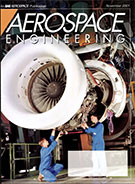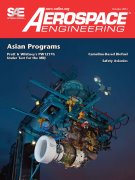Magazine

Autonomous Vehicle Engineering: September 2019
2019-09-05
Editorial The new 'face' of privacy The Navigator No trust in AI systems without data protection Innovation Nation In the mobility space, Israel is rivaling Silicon Valley for smarts and start-ups - and beats it in chutzpah. Autonomy in your Face Biometric technology is deemed essential to ensuring AV driving safety and advancing the user experience-if privacy issues don't derail its deployment. About Face! To win acceptance, deployment of facial-recognition technology needs to fit within a picture-perfect consumer and legal framework that balances benefits with privacy protection. The Vehicle as Gaming Device Audi spin-off Holoride uses VR to turn the back seat into an entertainment platform. BlackBerry Tech Duo Sees Emergence of Vehicle-based Platforms Though likely to provide the OS of autonomy, BlackBerry also anticipates a larger shift to automobiles as software platforms.



















